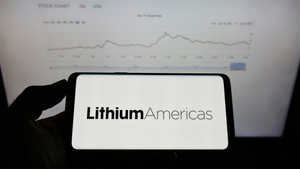
As October 2025 draws to a close, the cryptocurrency market is abuzz with anticipation: a significant year-end surge for altcoins, potentially exceeding 30%, is on the horizon. This forecast is largely predicated on the observed peak in Bitcoin's (BTC) dominance, a critical market indicator that often precedes a vibrant "altcoin season." With Bitcoin's robust rally establishing new all-time highs and then entering a consolidation phase, market analysts are pointing to historical patterns and current capital rotation as key drivers for this impending shift.
The current sentiment across the crypto ecosystem is one of cautious optimism. Bitcoin's recent performance, pushing past $125,000 in early October, has set a strong bullish foundation. Now, with its dominance showing signs of weakening, capital is expected to flow into the broader altcoin market, unlocking substantial gains for alternative digital assets. This rotation signals a maturing market where investors, having secured profits from Bitcoin's run, are now seeking higher returns in the more volatile, yet potentially more rewarding, altcoin space. For the crypto ecosystem, this matters immensely as it signifies a diversification of value beyond Bitcoin, driving innovation and adoption across various blockchain applications, from DeFi to NFTs and Web3.
Market Impact and Price Action
October 2025 has been a momentous month for Bitcoin, setting the stage for the anticipated altcoin surge. In early October, Bitcoin (BTC) experienced a vigorous rally, breaching previous resistance levels and establishing new all-time highs. By October 6, 2025, BTC surged past $126,279 USD on the Coinbase (NASDAQ: COIN) BTC/USD pair, marking its fifth consecutive session of gains. This impressive performance saw Bitcoin gain over 14% in the first week of October alone, and approximately 30% since the start of the year. This surge was primarily fueled by robust inflows into U.S. spot Bitcoin Exchange-Traded Funds (ETFs), with institutional demand "back in full force," as hundreds of millions entered these investment vehicles daily. Bitcoin's increasing perception as a safe-haven asset amidst global economic uncertainties also contributed to its strength.
While Bitcoin dominated headlines, most altcoins experienced significant corrections in September, with some falling over 20% from recent highs. However, early October has signaled a potential shift. The Altcoin Market Cap (TOTAL2), excluding Bitcoin and Ethereum, has surged, invalidating its September decline and reaching a new all-time high of $1.18 trillion. This indicates a marked increase in trading volume and liquidity for altcoins. On-chain analysis also shows institutional accumulation and growing whale interest in several altcoins. Binance (BNB), a leading global exchange, is actively enhancing altcoin liquidity through its "Altcoin LiquidityBoost Program."
Specific altcoins are already showing promising technical formations. Solana (SOL) is predicted to outperform Bitcoin in October, forming a double bottom pattern and breaking key resistance. Its Relative Strength Index (RSI) is above 50, and the Moving Average Convergence/Divergence (MACD) is positive, indicating bullish momentum. SUI is exhibiting a bullish breakout opportunity from a descending wedge pattern, with its Total Value Locked (TVL) reaching an all-time high of $2.63 billion. Zcash (ZEC) has broken through long-term resistance, while BNB displayed strong fundamentals with a jump of over 30% at the end of September. XRP has seen significant derivatives activity, with open interest exceeding $1 billion due to speculation surrounding a possible spot ETF, though its Stochastic RSI of 90 suggests overbought conditions. Ethereum (ETH) is trading around $4,569, holding above the $4,500 support, with $4,775 as a crucial resistance level to reclaim its all-time high of $4,956. Mid-cap altcoins like MYX Finance (MYX) and Starknet (STRK) have surged over 20% in the last 24 hours, signaling capital rotation into more volatile assets as Bitcoin consolidates.
Comparing current market conditions to past events, the decline in Bitcoin dominance (BTC.D) is a crucial signal. After steadily increasing since 2023 and surpassing 60.5% in April 2025, BTC.D has now dropped below 59%, and even 58% in early October. This mirrors historical patterns where a local peak in Bitcoin dominance precedes an altcoin season. For instance, during the 2017-2018 ICO boom, Bitcoin dominance plummeted from 96% to 36%, leading to an explosive altcoin season. Similarly, in the 2021 bull run, BTC.D peaked around 73% before falling to 39%, resulting in a 650% increase in the altcoin market cap. The current market exhibits a similar dynamic: Bitcoin has achieved significant gains and is now in a consolidation phase, historically a precursor to altcoin outperformance. The Altcoin Season Index reaching multi-year highs (around 67) and a surge in Google searches for "altcoins" further strengthen this comparison. While institutional money via Bitcoin ETFs is a new and powerful force, the current altcoin performance appears more selective, favoring projects with strong technical formations, clear utility, and alignment with new narratives like institutional DeFi and tokenized assets.
Community and Ecosystem Response
The crypto community is currently experiencing a wave of "exuberant growth" and "fervent optimism" in early October 2025, largely driven by the anticipation and early signs of an altcoin season. Social media platforms like X (formerly Twitter) and Reddit are buzzing with discussions. Hashtags like #CryptoBubble2025 are trending, showcasing both the excitement for potential gains and cautious skepticism regarding extreme price targets. The term "Altcoin Season" is widely believed to be in full swing, with Google searches for "altcoins" surging by 40-50% in late September, and the Altcoin Season Index hitting 67, indicating a heightened investor appetite for riskier, higher-reward digital assets.
Reddit communities, particularly r/CryptoCurrency, are "buzzing with both speculative excitement and prudent warnings." Ethereum (ETH) remains a hot topic, boasting an 82% bullish sentiment score by late August. Newer tokens like Bitcoin Hyper, Pepenode, and MAXI DOGE are also generating discussion for their moonshot potential. While optimism is high, influencers like Michaël van de Poppe have issued warnings about a monumental "crypto bubble" in 2025, predicting a significant market crash after potential 10-20x returns for altcoins. These warnings have sparked widespread debate, with some echoing concerns about inflated valuations, while others maintain optimism due to increasing institutional adoption.
Crypto influencers and thought leaders have largely adopted a bullish stance, celebrating the rally and reiterating long-term positive outlooks for Bitcoin and the broader crypto market. Many are sharing technical analyses and discussing potential future scenarios, though cautioning against excessive leverage. Michaël van de Poppe, for instance, has predicted Bitcoin could reach $500,000 and Ethereum $20,000, with altcoins seeing 10-20x returns before a potential 2025 bubble burst. Other analysts project Bitcoin targets of $150,000-$250,000 by year-end 2025, with industry leaders like Michael Saylor anticipating $1 million by 2030. Influencers are also emphasizing institutional adoption, particularly through U.S. spot Bitcoin ETFs, as a more robust foundation for the current bull run.
The effects on related DeFi protocols, NFT projects, and Web3 applications are tangible. The DeFi ecosystem is seeing increased Total Value Locked (TVL) and user activity, particularly within Ethereum's network, with significant value locked in Lido and EigenLayer. Liquid staking and restaking sectors are emerging as new trust and yield layers, benefiting from the growth of institutional DeFi. Layer 2 (L2) networks are experiencing increased adoption, with projects like Arbitrum (ARB), Merlin Chain (MERL), and Immutable (IMX) gaining attention, especially those focused on gaming and NFTs. Solana's ecosystem is powering some of the fastest-growing applications in DeFi and gaming. The overall "neutral to cautiously optimistic tone" in Web3 is driven by stabilizing global political situations and rising institutional investment, which continues to drive adoption. Altcoins are increasingly seen as frameworks for digital economies, powering decentralized apps, smart contracts, and digital assets for virtual worlds. New projects leveraging AI, such as Ozak AI, are also emerging, integrating AI intelligence with decentralized networks. It's important to note that while an altcoin season is underway, growth is selective, favoring projects with strong fundamentals, real-world utility, and institutional backing.
What's Next for Crypto
The anticipated altcoin surge and Bitcoin dominance peak in October 2025 signify a pivotal shift, ushering in both short-term opportunities and long-term implications for the crypto market. In the immediate aftermath, the altcoin rally is expected to continue, with capital flowing from Bitcoin into a diverse array of altcoins, including large-caps like Ethereum (ETH) and Solana (SOL), followed by mid- and small-cap assets. This period will likely be characterized by increased volatility, offering substantial gains but also heightened risk. Key narratives driving this surge include AI-integrated blockchain projects, the tokenization of real-world assets (RWAs), and Layer-2 solutions, with GameFi tokens also gaining traction.
Long-term, these market movements point towards a more mature and diversified crypto landscape. Increased institutional participation, driven by regulatory clarity and the approval of various crypto Exchange-Traded Funds (ETFs), is expected to diversify beyond Bitcoin and Ethereum into quality altcoins with proven use cases. This institutional confidence provides a more stable foundation for altcoin growth. Furthermore, evolving global regulatory frameworks, particularly in the U.S. with efforts like the GENIUS Act for stablecoins, will reduce uncertainty and foster greater participation. The market's focus is shifting towards projects with tangible utility and real-world applications, with RWA tokenization emerging as a major narrative for 2025, bridging DeFi with traditional finance. Technological advancements in Layer-2 scaling solutions and the convergence of AI and blockchain are also critical for mass adoption.
Several catalysts and developments bear watching. Continued progress on regulatory clarity, especially regarding spot altcoin ETFs for assets like Solana, XRP, Cardano (ADA), and Litecoin (LTC), will significantly influence market sentiment and institutional inflows. Macroeconomic factors, such as potential interest rate cuts by central banks, could further fuel risk appetite. Upcoming Ethereum upgrades, like the Pectra upgrade anticipated in Q1 2026, could enhance its deflationary tokenomics and scalability. The continued expansion of RWA tokenization, with major financial institutions actively participating, could unlock trillions in value. The development and adoption of projects at the intersection of AI and blockchain will also create new narratives and drive capital into specific altcoin sectors. While institutional adoption grows, retail investor enthusiasm, often fueled by social media, remains a significant factor in altcoin surges.
For crypto projects, strategic considerations include focusing on utility, building sustainable ecosystems, embracing regulatory compliance, innovating in growth areas like RWA and AI, and fostering strong communities. For investors, diversification beyond Bitcoin into high-quality altcoins, rigorous due diligence, and monitoring Bitcoin dominance and market sentiment are paramount. Profit-taking strategies and understanding risk management are crucial given altcoin volatility. Possible scenarios include an "Extended Altseason with Sector Rotation" (high likelihood), where capital flows in waves across different altcoin sectors; "Consolidation and Stable Growth" (medium-high likelihood), characterized by continued institutional adoption and utility-driven growth; and a "Rapid Boom and Bust Cycle" (medium likelihood), driven by retail FOMO and overleveraged trading. While regulatory headwinds (low-medium likelihood) remain a risk, the general trend towards clearer frameworks suggests a more positive outlook.
Bottom Line
The cryptocurrency market is at an inflection point in October 2025, with a strong signal for an impending or ongoing altcoin surge and a potential peak in Bitcoin's dominance. For crypto investors and enthusiasts, the key takeaway is clear: an altcoin season is here, or very nearly so, driven by capital rotation from Bitcoin into a diverse array of alternative cryptocurrencies. This shift is supported by Bitcoin's sustained rally and subsequent consolidation, creating fertile ground for altcoins to flourish. Specific assets like Solana (SOL), SUI, Zcash (ZEC), XRP, and BNB are already showing promising technical indicators and are poised for significant rallies. The decrease in stablecoin dominance further underscores a resurgence of risk appetite, with billions being deployed into higher-risk assets across DeFi, Layer-1, and AI tokens. This period follows what has reportedly been the longest altcoin accumulation phase in history, typically a precursor to robust rallies.
The long-term significance of these market movements points to a maturing and diversifying cryptocurrency landscape. The declining Bitcoin dominance highlights that the market is increasingly valuing the distinct use cases and technological advancements offered by altcoins. The momentum is largely concentrated in utility-driven sectors such as Layer-2 solutions, AI infrastructure, and real-world asset (RWA) tokenization, indicating a shift towards fundamental utility over pure speculation. Growing institutional interest in altcoins, with public companies incorporating high-quality assets into their reserves, further solidifies their long-term potential. The possible launch of altcoin Exchange Traded Funds (ETFs) as early as October 2025, facilitated by recent regulatory adjustments from the U.S. Securities and Exchange Commission (SEC), could be a transformative event, driving substantial capital inflows and legitimizing the asset class further.
These market dynamics paint a positive picture for broader crypto adoption. An active altcoin season, following Bitcoin's strong performance, often serves as an entry point for new retail investors, boosting overall market liquidity and participation. An evolving regulatory landscape, marked by legislative efforts like the GENIUS Act and the pending CLARITY Act, is expected to enhance the legitimacy of the broader crypto ecosystem and encourage greater engagement from both retail and institutional players. While crypto ownership remains relatively low globally, these developments suggest substantial room for future growth. The current "slow, steady rotation" of capital into altcoins, as opposed to rapid, unsustainable surges, could foster a more sustainable and long-term rally for the entire market.
To navigate this exciting period, investors and enthusiasts must closely monitor several key metrics. Bitcoin Dominance (BTC.D) is paramount; a sustained decline below 59% or a more significant drop below 50% often signals the intensification of an altcoin season. The Altcoin Season Index, which tracks the percentage of top altcoins outperforming Bitcoin, is currently hovering around 67-71 and reaching the 75% threshold will officially declare an altcoin season. The ETH/BTC ratio, indicating Ethereum's strength against Bitcoin, is another crucial precursor to broader altcoin strength. The TOTAL3 market cap (total market cap excluding BTC and ETH) has hit new highs, with bullish chart patterns targeting $1.46 trillion to $4.37 trillion. Additionally, keep a close watch on stablecoin dominance, institutional and whale activity, and regulatory developments, particularly regarding altcoin ETF approvals. Emerging narratives like AI tokens, Real-World Assets (RWA), DePIN, Layer 2 solutions, and memecoins will also drive localized altcoin rallies. Finally, Bitcoin's continued stability or upward trajectory, with analysts projecting targets of $150,000 to $200,000 by the end of 2025, will provide the necessary foundation for the broader market rally.
This article is for informational purposes only and does not constitute financial or investment advice. Cryptocurrency investments carry significant risk.






